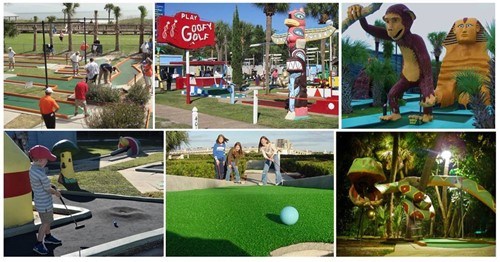
For Immediate Release
Saturday, May 11, 2019
Contact: Sarah Revell
850-245-6522
[email protected]
Florida Department of State Launches Florida Historic Mini Golf Trail on National Miniature Golf Day
Tallahassee –
Secretary of State Laurel M. Lee today announced the launch of the Florida Historic Mini Golf Trail, which includes six historic miniature golf courses in Florida that are more than 50 years old. The six courses are Putt Putt Amelia Island in Fernandina Beach, Goofy Golf in Fort Walton Beach, Goofy Golf in Panama City Beach, Goofy Golf in Pensacola, Polynesian Putter in St. Pete Beach and Ripley’s Bayfront Mini Golf in St. Augustine, which is listed on the National Register of Historic Places. Specially-designed scorecards are available at each location. Additional resources, like coloring pages for kids, are available on the Florida Historic Mini Golf Trail website.
“May 11 is National Miniature Golf Day and it is the perfect opportunity to launch the Department’s new Florida Historic Mini Golf Trail, which complements our existing Florida Historic Golf Trail,” said Secretary Lee. “Each course offers kids and families the opportunity to ‘Come Putt on History!’ and enjoy quality time together.”

Miniature golf developed in several different locations in the early 20th century. The earliest known course is Thistle Dhu, which was built in 1916 on the estate of James Barber in Pinehurst, North Carolina. In the early 1920s, the game gained popularity, and by 1930, the annual attendance for these attractions in the United States alone was estimated in the millions.
As a variation of regulation golf, miniature golf allows only the use of a putter on a course with holes designed on a much smaller scale. Courses generally have 18 holes, and often have hazards built around or through playful structures or mechanical equipment such as windmills, waterfalls or animals.
For many, their first experience with the game of golf comes from putting at a miniature golf course with their family and friends. Today, millions of kids and adults play annually on more than 1,000 miniature golf courses across the United States.
To learn more about the Florida Historic Mini Golf Trail, visit floridahistoricgolftrail.com/mini or find us on Facebook at @FloridaHistoricGolfTrail.
# # #
About the Florida Historic Golf Trail
Florida's golf history, recognized as one of the oldest in the nation, dates back to the late 1800s when a number of early courses were created along with the development of railroads and hotels in the state. The Florida Historic Golf Trail is a collection of more than 50 historic, publicly accessible golf courses throughout the state that can still be played on today. Through the Florida Historic Golf Trail, golfers can play on courses designed by world-class architects and played by famous golfers such as Bobby Jones, Walter Hagen, Gene Sarazen, Babe Zaharias, Arnold Palmer and Jack Nicklaus. Information about the history and current day contact information for each partner course can be found at FloridaHistoricGolfTrail.com. Find the historic course near you and Come Play on History!
About the Division of Historical Resources
The Florida Department of State’s Division of Historical Resources (DHR) is responsible for preserving and promoting Florida’s historical, archaeological, and folk culture resources. The Division Director’s office oversees a grants-in-aid program to help preserve and maintain Florida’s historic buildings and archaeological sites; coordinates outreach programs such as the State Historic Markers program and the Florida Folklife program which identifies and promotes the state's traditional culture. DHR directs historic preservation efforts throughout the state in cooperation with state and federal agencies, local governments, private organizations, and individuals. The Division Director serves as the State Historic Preservation Officer, acting as the liaison with the national historic preservation program conducted by the National Park Service. The Division is comprised of two Bureaus, archaeological research and historic preservation. For more information visit flheritage.com.
